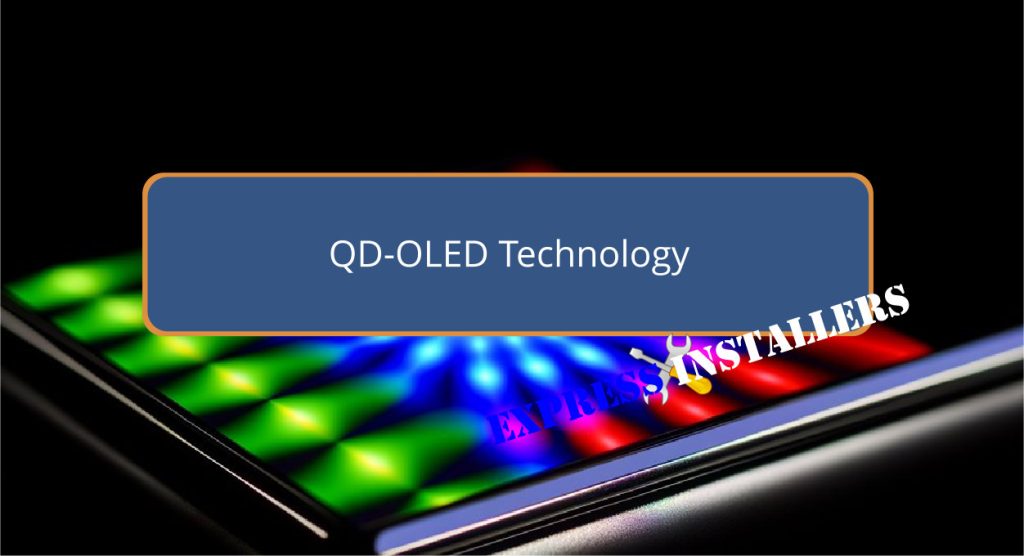
QD-OLED technology offers you the best of both worlds, fusing OLED’s deep, true blacks with the enhanced brightness and colour accuracy of quantum dots.
As a self-emissive display, each pixel lights up independently, ensuring exceptional contrast and precision in displaying images.
You’ll notice a significant upgrade in brightness and a wider colour gamut compared to traditional displays, along with a reduced risk of burn-in.
High-end models like Samsung S95D and Sony A95L showcase this technology brilliantly, making them a top choice for superb visual experiences.
Exploring further, you’ll find how these enhancements meet your viewing preferences and potentially transform your experience.
Quick Summary
- QD-OLED technology combines self-emissive OLED properties with quantum dot enhancements for superior brightness and colour accuracy.
- Utilises a blue OLED light source that is transformed by quantum dots to produce vibrant, precise colours.
- Offers pixel-level control resulting in deep blacks and an excellent contrast ratio, enhancing visual fidelity.
- Reduces the risk of burn-in compared to traditional OLEDs, increasing the longevity and reliability of displays.
- For TV Wall Mounting and cable concealing in all wall types? Fill out the Form Below for instant quotation and same-day/ next-day TV wall mounting service.
Definition and Overview
QD-OLED, or Quantum Dot Light Emitting Diodes, represents a cutting-edge display technology that ingeniously blends the self-emissive properties of OLEDs with the vibrant colour enhancement of quantum dots.
You’ll enjoy the deep, true blacks and an expansive colour gamut. Its brightness and pixel-level control elevate it above standard displays, making it the top choice for high-end TVs.
Immerse yourself in the future of television with QD-OLED.
Technical Functionality
Delving into how QD-OLED technology functions, you’ll find it starts with a blue OLED light source.
Here’s a clearer view:
- Blue OLED forms the foundation, enhancing brightness and peak luminance.
- Quantum dots convert this light, boosting colour accuracy and vibrant colours.
- Self-emissive pixels provide precise black levels and contrast ratio.
- The result? A thinner display with remarkable visuals.
Comparative Analysis
While traditional OLED technology has set high standards in display quality, QD-OLED technology elevates this benchmark even further by integrating the best aspects of OLED and quantum dots.
| Feature | OLED | QD-OLED |
|---|---|---|
| Brightness | High | Higher |
| Colour Accuracy | Excellent | Superior |
| Burn-in Risk | Present | Reduced |
You’ll love QD-OLED’s richer visuals and reduced burn-in risks.
Market Trends and Pricing
As QD-OLED technology rolls out with models like the Samsung S95D and Sony A95L in 2024, you’ll find that starting prices of £1,399 for the 55-inch model and £2,699 for the 65-inch version reflect its premium status.
- Vibrant Colours & Superior Picture Quality: Recognised by high-end consumers.
- Competitive Pricing: Discounts available, like £1,599 for Samsung S90D.
- Increasing Market Traction: Expected to grow as prices drop.
- Future Price Reductions: More brands entering the market.
The introduction of technologies such as Quantum Matrix Technology Pro enhances display capabilities, contributing to the premium pricing and performance expectations of new TV models.
Future and Consumer Education
If you’re considering upgrading to a QD-OLED TV, understanding the technology’s future and its benefits is essential.
Consumer education on QD-OLED technology highlights advantages in colour accuracy and deep blacks compared to OLED and QLED TVs.
With anticipated price reductions and advancements reducing burn-in risks, you’ll find superior display quality that aligns with your viewing preferences, ensuring a smart, future-proof investment.
Additionally, QD-OLED combines the best features of Quantum Dots and OLED, offering enhanced brightness and contrast while maintaining the ability to display true blacks.
Frequently Asked Questions
Are QD-OLED Better Than OLED?
You’re asking if one technology outperforms another. Considering features, advantages, colour, and brightness, many reviews suggest the first has a longer lifespan, better gaming experience, and enhanced vibrancy, despite potentially higher prices from leading manufacturers.
What Is the Disadvantage of QD-OLED?
You’ll find it’s pricier due to high manufacturing costs and still risks image retention. Despite excellent colour accuracy and brightness, power consumption and limited options due to its newness could sway your decision.
Is Sony Abandoning QD-OLED?
You’re likely wondering if Sony is stepping back from a specific technology. They aren’t abandoning it, but are focused on enhancing its performance, keeping pace with market trends, and overcoming production challenges.
How Long Will a QD OLED TV Last?
You’ll find your TV lasts considerably, with a lifespan of 50,000 to 100,000 hours. Enhance durability by avoiding static images and using screen savers. Advancements and maintenance updates will keep performance ideal over time.
Conclusion
You’ve seen how QD-OLED technology stands out with its vivid colours and deep contrasts.
As it evolves, you’ll notice it becoming more affordable, shaping the future of display technology.
Keep an eye on market trends and prices as they become more competitive.
Remember, understanding the ins and outs of QD-OLED will help you make an informed decision when upgrading your screens.
So, stay curious and educated as this tech continues to develop and dazzle.
